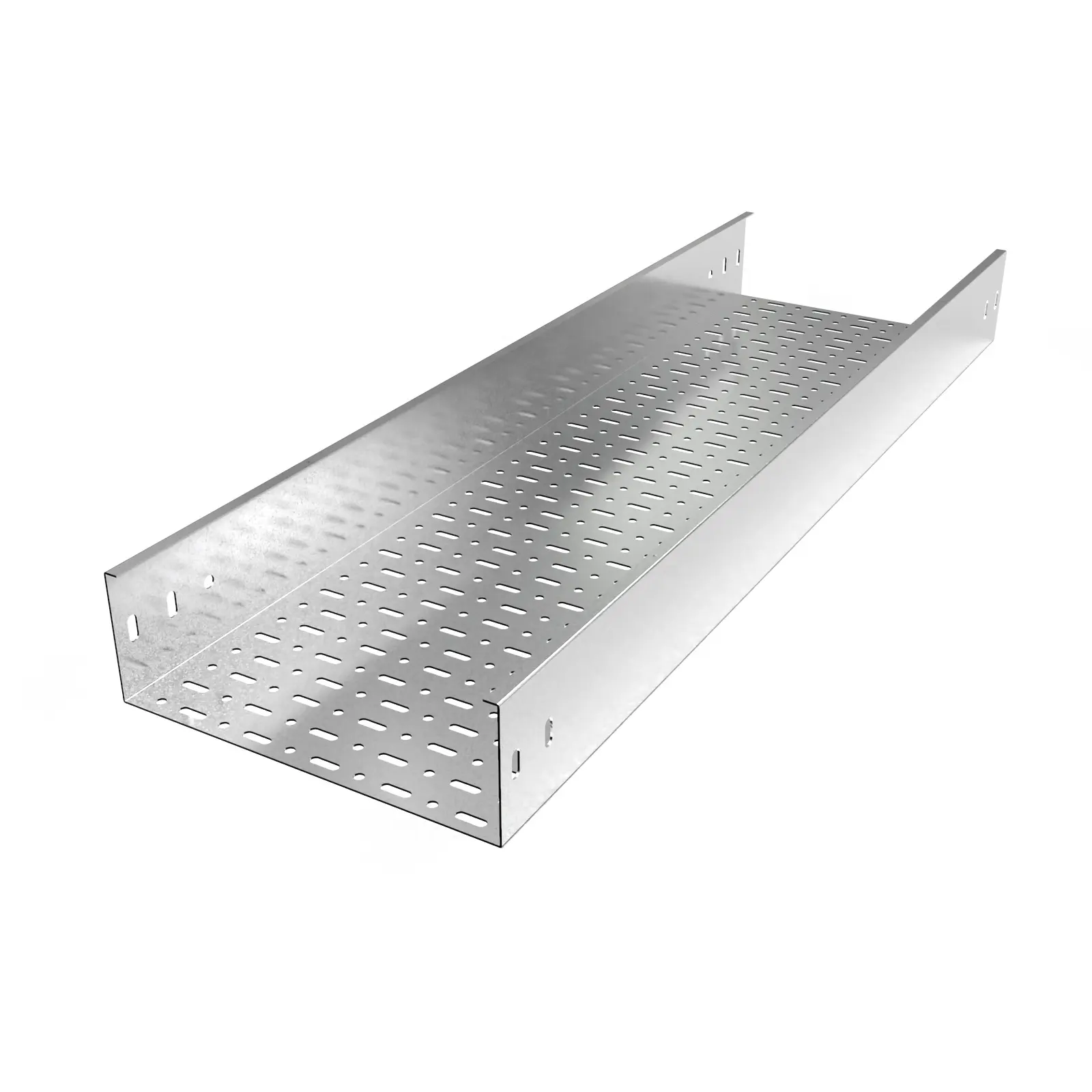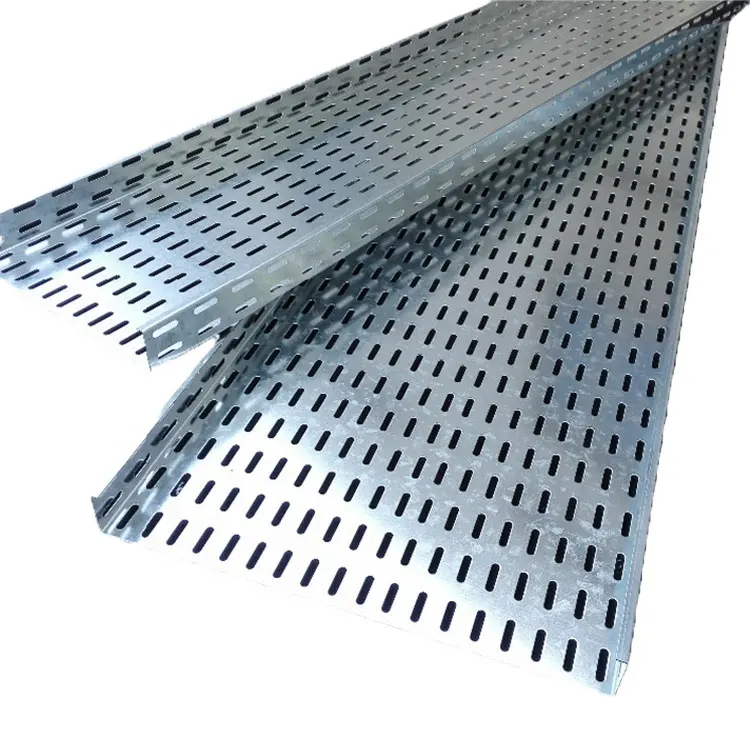Efficient and effective cable management is an indispensable aspect of modern construction and infrastructure projects. It plays a crucial role in ensuring the safety, reliability, and aesthetics of electrical wiring systems. Among the various cable management solutions available, ceiling cable trays have gained significant popularity due to their numerous advantages. This comprehensive guide delves deeper into the reasons why you should choose ceiling cable trays for your electrical wiring systems and explores their benefits in extensive detail.
Enhanced Safety and Protection:
One of the primary reasons to opt for ceiling cable trays is the unparalleled safety and protection they provide for your electrical cables. Cable trays are meticulously designed to offer a secure and organized pathway for cables, shielding them from damage, dust, moisture, and other environmental factors that can compromise their performance and lifespan.
Ceiling cable trays are typically fabricated from robust materials such as steel, aluminum, or PVC, which can withstand the weight of heavy cables and resist corrosion, fire, and impact. By elevating cables off the ground and away from potential hazards, ceiling cable trays significantly reduce the risk of electrical accidents, fires, and short circuits, thereby ensuring the safety of workers, equipment, and buildings.

Improved Cable Organization and Accessibility:
Ceiling cable trays facilitate superior cable organization and accessibility, making it effortless to install, modify, and maintain electrical wiring systems. Unlike conventional conduit or raceway systems that necessitate laborious and time-consuming threading of cables through enclosed pipes or channels, cable trays enable open-air routing of cables, allowing for rapid and flexible installation and reconfiguration.
Furthermore, ceiling cable trays grant easy access to cables for inspection, testing, and repairs without requiring extensive dismantling or disruption of surrounding structures. This not only saves time and labor but also minimizes the likelihood of errors and mistakes during maintenance activities, ultimately enhancing the overall reliability and efficiency of electrical systems.
Cost-Effective and Flexible Solution:
Ceiling cable trays present a cost-effective and adaptable solution for cable management compared to alternative options. They generally incur lower costs than conduit or raceway systems, as they require fewer components, labor, and installation time. Moreover, cable trays can accommodate a broad range of cable sizes, types, and configurations, enabling customization and scalability according to the specific needs and requirements of different projects.
Ceiling cable trays can also be effortlessly modified or expanded as the electrical system evolves or grows, without necessitating major structural changes or investments. This adaptability makes them an ideal choice for both new construction and retrofit projects, where future expansion or upgrades may be anticipated.
Aesthetically Pleasing and Space-Saving:
Ceiling cable trays contribute to a clean, clutter-free, and visually appealing environment by concealing cables above the ceiling level. This not only enhances the overall aesthetics of the space but also prevents potential trip hazards and interference with other building elements such as lighting fixtures, HVAC systems, and sprinklers.
In addition, ceiling cable trays are space-saving, as they utilize the overhead space efficiently without occupying valuable floor or wall areas. This is particularly advantageous in confined or crowded spaces, where floor or wall-mounted cable management solutions may be impractical or obstructive.
Compliance with Industry Standards and Regulations:
Ceiling cable trays are engineered and manufactured in accordance with international standards and regulations, guaranteeing their compatibility, interoperability, and safety across diverse applications and environments. These standards encompass National Electric Code (NEC), International Electrotechnical Commission (IEC), and Underwriters Laboratories (UL), among others.
By selecting ceiling cable trays that comply with these standards, you can ensure that your electrical wiring systems meet the required levels of performance, reliability, and safety, minimizing the risk of non-compliance penalties, insurance claims, or legal liabilities.
Ease of Installation and Maintenance:
Ceiling cable trays are designed with simplicity and ease of installation in mind. Their modular structure allows for quick assembly and mounting, reducing installation time and labor costs. Additionally, pre-fabricated components and accessories, such as tees, crosses, reducers, and covers, further simplify the installation process.
Maintenance of ceiling cable trays is also straightforward, thanks to their open design and accessibility. Cables can be easily added, removed, or rearranged without causing disruptions to the entire system, making it convenient for routine inspections, repairs, or upgrades.

Environmental Considerations:
Ceiling cable trays can contribute to sustainable construction practices by promoting energy efficiency and waste reduction. Open-air cable trays allow for better heat dissipation, reducing the risk of overheating and prolonging the lifespan of cables. Moreover, the use of recyclable materials in the manufacturing of cable trays, such as steel and aluminum, minimizes waste and supports environmentally friendly initiatives.
Compatibility with Modern Technologies:
As technology continues to advance, ceiling cable trays remain a versatile and adaptable solution for accommodating evolving electrical systems. They can seamlessly integrate with modern technologies such as fiber optic cables, data cables, and power cables, ensuring that your infrastructure remains up-to-date and capable of supporting future advancements.
Conclusion:
Ceiling cable trays offer a multitude of advantages for electrical wiring systems, including enhanced safety and protection, improved cable organization and accessibility, cost-effectiveness, aesthetic appeal, space-saving, compliance with industry standards, ease of installation and maintenance, environmental considerations, and compatibility with modern technologies. Whether you are involved in new construction, renovation, or maintenance projects, carefully considering ceiling cable trays as your cable management solution can help you achieve optimal performance, efficiency, and longevity of your electrical systems while safeguarding the well-being of people and assets. By weighing the benefits outlined in this comprehensive guide, you can make an informed decision that best suits your project’s unique requirements and objectives.

